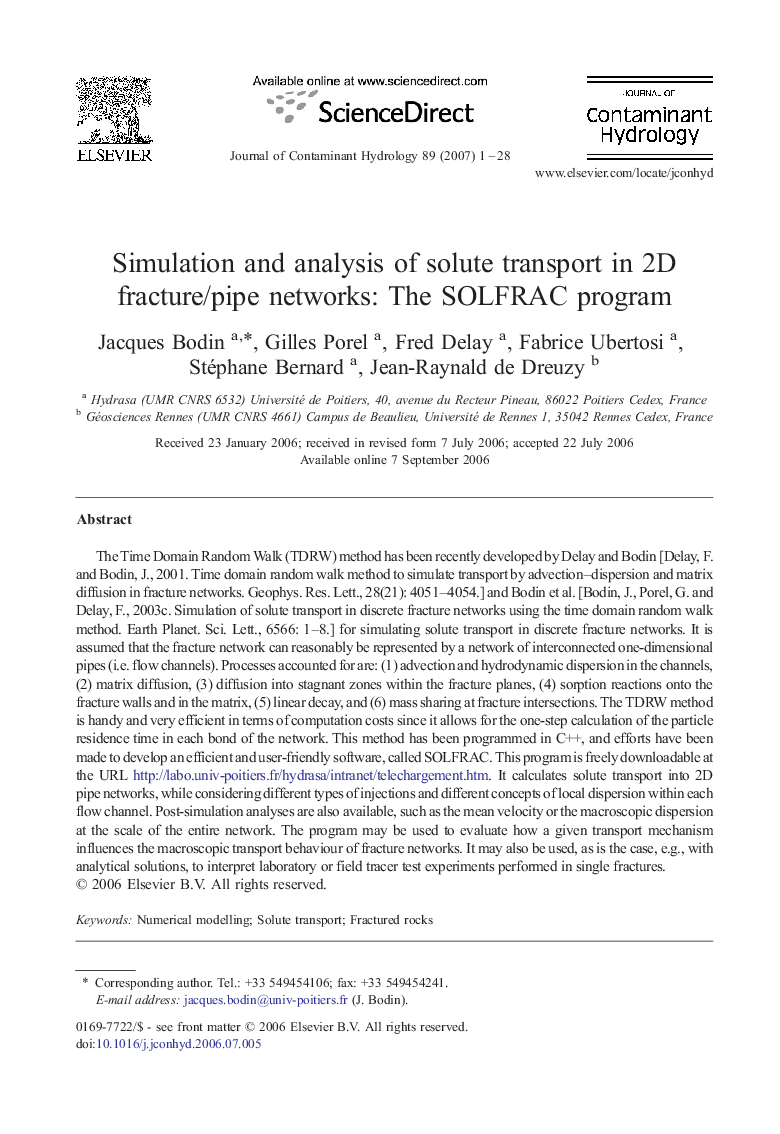| کد مقاله | کد نشریه | سال انتشار | مقاله انگلیسی | نسخه تمام متن |
|---|---|---|---|---|
| 4547746 | 1627129 | 2007 | 28 صفحه PDF | دانلود رایگان |

The Time Domain Random Walk (TDRW) method has been recently developed by Delay and Bodin [Delay, F. and Bodin, J., 2001. Time domain random walk method to simulate transport by advection–dispersion and matrix diffusion in fracture networks. Geophys. Res. Lett., 28(21): 4051–4054.] and Bodin et al. [Bodin, J., Porel, G. and Delay, F., 2003c. Simulation of solute transport in discrete fracture networks using the time domain random walk method. Earth Planet. Sci. Lett., 6566: 1–8.] for simulating solute transport in discrete fracture networks. It is assumed that the fracture network can reasonably be represented by a network of interconnected one-dimensional pipes (i.e. flow channels). Processes accounted for are: (1) advection and hydrodynamic dispersion in the channels, (2) matrix diffusion, (3) diffusion into stagnant zones within the fracture planes, (4) sorption reactions onto the fracture walls and in the matrix, (5) linear decay, and (6) mass sharing at fracture intersections. The TDRW method is handy and very efficient in terms of computation costs since it allows for the one-step calculation of the particle residence time in each bond of the network. This method has been programmed in C++, and efforts have been made to develop an efficient and user-friendly software, called SOLFRAC. This program is freely downloadable at the URL http://labo.univ-poitiers.fr/hydrasa/intranet/telechargement.htm. It calculates solute transport into 2D pipe networks, while considering different types of injections and different concepts of local dispersion within each flow channel. Post-simulation analyses are also available, such as the mean velocity or the macroscopic dispersion at the scale of the entire network. The program may be used to evaluate how a given transport mechanism influences the macroscopic transport behaviour of fracture networks. It may also be used, as is the case, e.g., with analytical solutions, to interpret laboratory or field tracer test experiments performed in single fractures.
Journal: Journal of Contaminant Hydrology - Volume 89, Issues 1–2, 5 January 2007, Pages 1–28